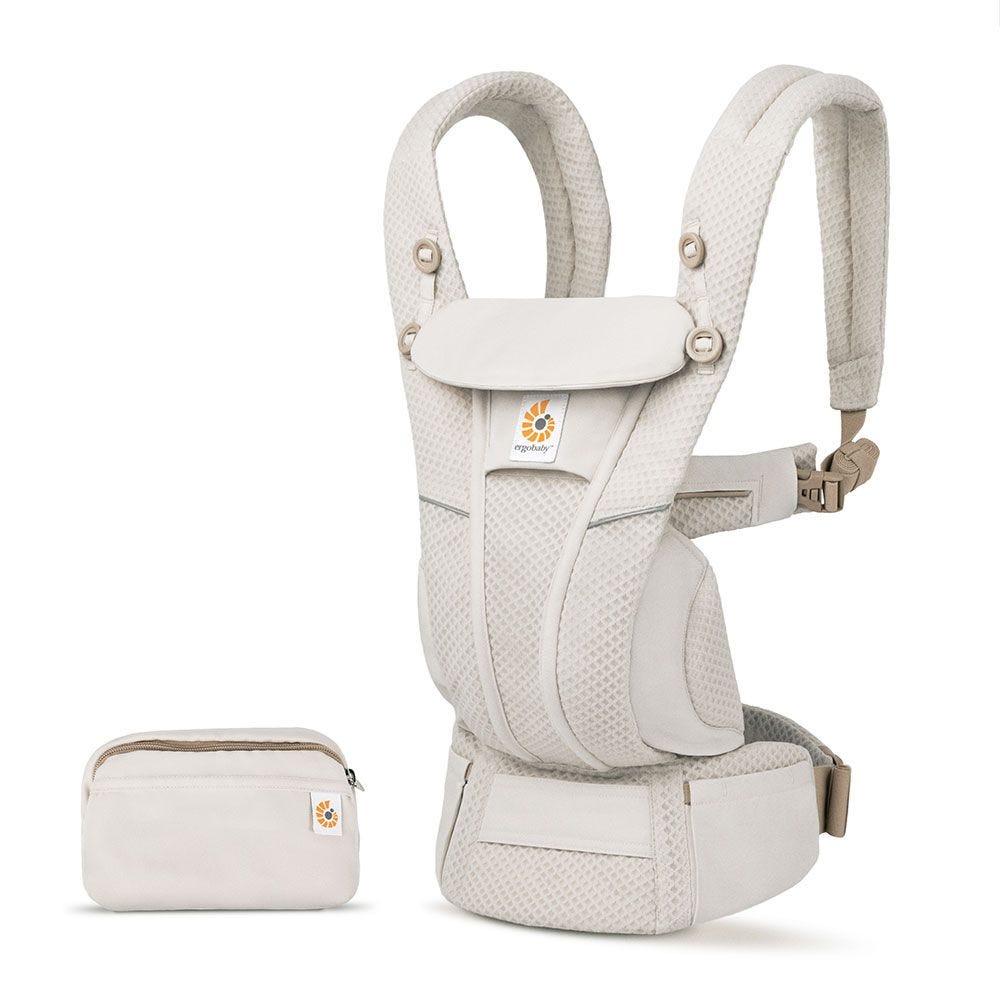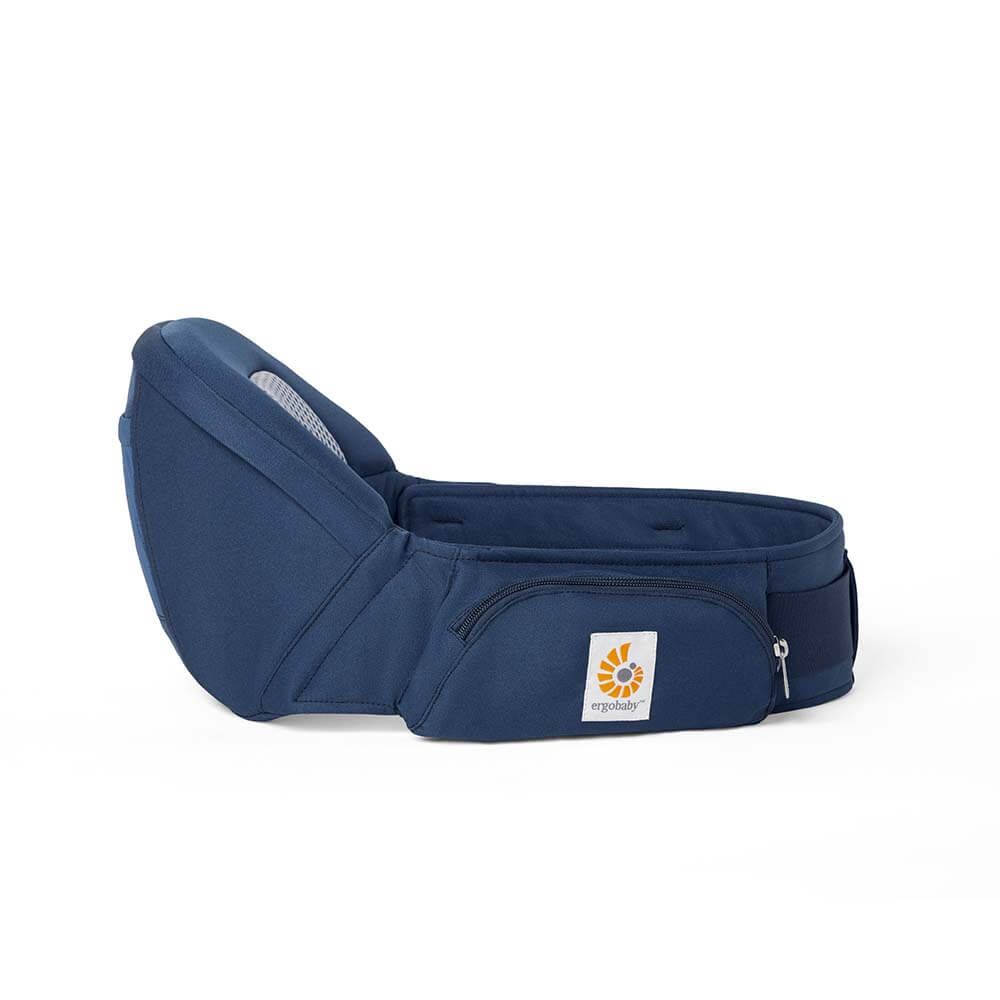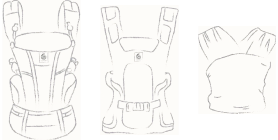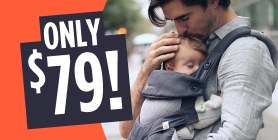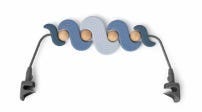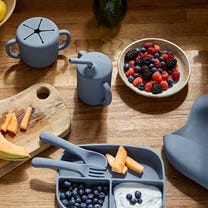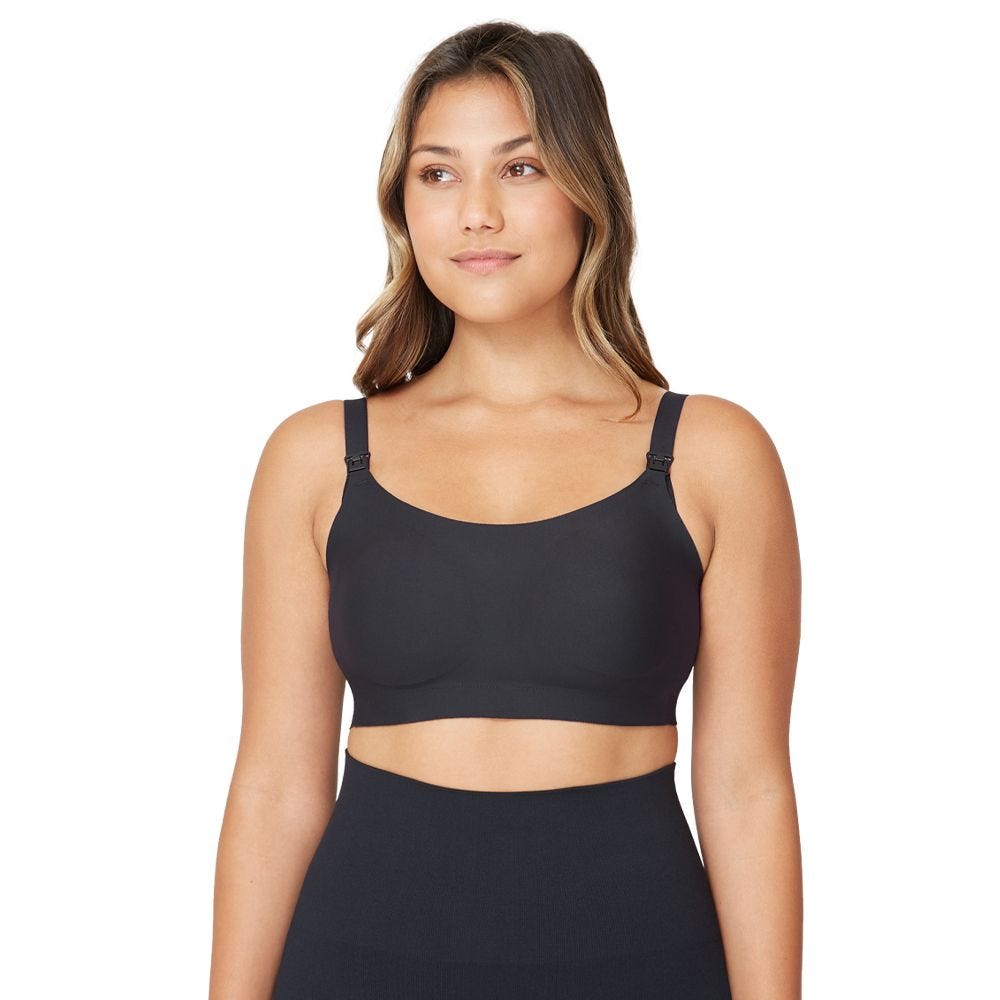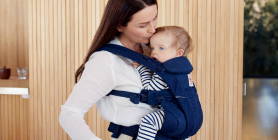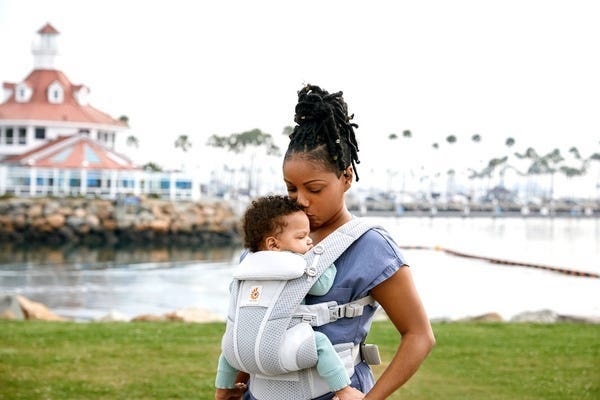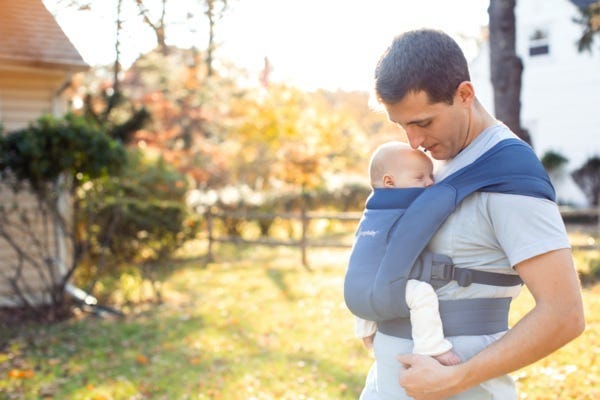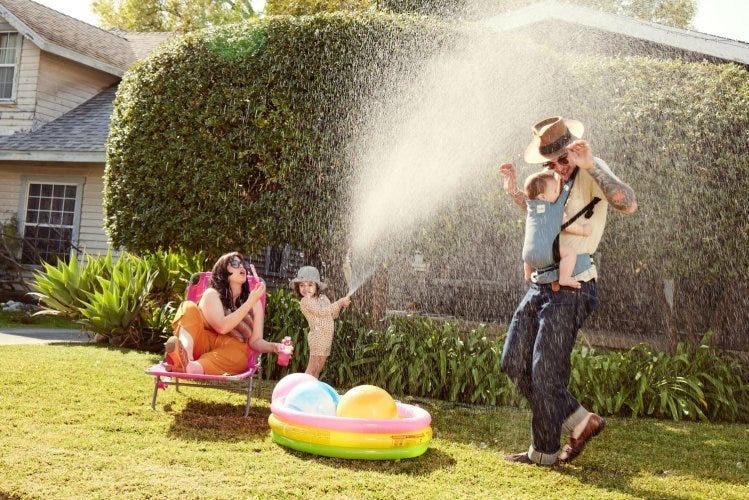Kangaroo Care describes a technique in which infants, often premature and underweight, are placed, skin-to-skin, on the chest of the mother or primary caregiver. This position ensures physiological and physical closeness and warmth. The stable body temperature of the parent can effectively regulate the infant’s temperature, and provides easy accessibility to breastfeeding. Even with the advanced technology in NICUs available in the United States, one recent study noted that 82% of neonatal intensive care units in the US include kangaroo care. Originally devised in in 1978, the concept of Kangaroo Care was the brainchild of Dr. Edgar Rey Sanabria, Professor of Neonatology at Universidad Nacional de Colombia, as a response to increasing mortality rates of premature and low birth weight infants. Lacking the resources for technologically advanced equipment and extra nurses and doctors, Sanabria proposed that allowing mothers to remain skin-to-skin with these fragile infants might increase their body temperatures, while allowing exclusive access to breastfeeding as needed. This would ideally reserve space in the limited number of incubators for those babies in the most critical conditions. Proper Kangaroo Care involves skin-to-skin contact between parent and baby. The infant may wear a diaper and hat only, and the parent has either a bare torso, or may wear a gown or shirt unbuttoned to maintain skin contact with the baby. A stretchy wrap can be used to engulf the parent and infant, allowing minimal exposure to colder air and ensuring proper support and positioning for baby’s hips. Kangaroo Care’s definition in Wikipedia: The tight bundling is enough to stimulate the baby: vestibular stimulation from the mother’s breathing and chest movement, auditory stimulation from the mother's voice and natural sounds of breathing and the heartbeat, touch by the skin of the mother, the wrap, and her natural tendency to place the hands over the baby. All this stimulation is important for the baby’s development. Fathers can also use the skin-to-skin contact method. Kangaroo care is often used immediately after birth, when the infant is placed on the mother’s chest within the first minute and throughout at least the first feeding. The benefits of Kangaroo Care are immense. For mothers, it promotes attachment and connection with the new infant, thus improving parental confidence; and increases milk flow for breastfeeding. Babies enjoy more stabilized heart rate, regulated breathing pattern, improved oxygen saturation, longer sleep, more rapid weight gain, greater success with breastfeeding, decreased crying, and earlier hospital discharge. Hospitals benefit as well, with reduced need for expensive equipment, increased parental involvement, and better use of healthcare dollars. A recent article featured on MSNBC’s Today show highlights the life-saving benefits of Kangaroo Care. In what is surely every parent’s most profound fear, Australian mother Kate Ogg was told that her infant Jamie, born a twin at just 27 weeks, had not survived. The grieving mother was permitted to hold and cradle him, as she and her husband attempted to reconcile themselves with the tragedy. After about five minutes of skin-to-skin contact, though, Jamie began to show startled movements that became increasingly pronounced. Doctors assured the couple that these movements were merely reflexes. They continued to hold and snuggle with their infant for two hours, at which time he opened his eyes! Unsure of what to believe, the Oggs kept interacting with Jamie, who then began clasping their fingers, as infants do, and finally accepted breastmilk on the tip of Kate’s finger. Says Kate, regarding her instinct to put Jamie on her bare chest: “[The baby] comes out of you, and all of a sudden there isn’t the warmth or smell of the mother or the sound of their heartbeat. And so putting him back on my chest was as close to him being inside me where he was safe.” Dr. Lisa Eiland of the Weill Cornell Medical Center in New York City confirms the significance of Kate’s instinctive choice to employ Kangaroo care. “What’s important is the warmth that the mother provides and the stimulation that the baby may have received from hearing the mother’s heartbeat,” Eiland said. “So those are all things that may have helped the baby in terms of going down the path to living as opposed to the path of death.” Kangaroo Care refers to an instinctive position utilized by most creatures when caring for their young. Defying technology and “advanced” intervention, the simple act of a mother holding her infant against her bare skin; sharing her heartbeat, body rhythm, warmth, and safety; has proven to be the most widely successful way for infants, especially those who are preterm or underweight, to thrive. Says David Ogg, father of Jamie (who is now 5 months old) of his “very strong, very smart wife” and her intuitive use of Kangaroo care: “She instinctively did what she did. If she hadn’t have done that, then Jamie probably wouldn’t be here.”
References: http://en.wikipedia.org/wiki/Kangaroo_care http://today.msnbc.msn.com/id/38988444/ns/today-parenting_and_family/t/moms-hug-revives-baby-was-pronounced-dead/#.TuHIl3r4LFn http://my.clevelandclinic.org/healthy_living/infant_care/hic_kangaroo_care.aspx
Emotional Benefits of Getting Outside
Spending time in nature with your baby can strengthen the bond between you. The simple act of holding your baby close, feeling their warmth, and sharing new experiences together can create strong emotional connections. It’s also a wonderful way to reduce stress and improve your mood. When my littles were extra fussy, I’d take a walk around the neighborhood. Even though I don't live in an area with trails and surrounded by nature, simply behind outside changed everything. A little vitamin D does wonders!
Cognitive Development
Nature is a sensory wonderland for babies. The different sights, sounds, and smells can stimulate your baby’s senses and promote cognitive development. Watching leaves rustle, hearing birds chirp, and feeling the texture of a tree bark can all contribute to their learning and development.
All About Baby Carriers for Nature Adventures
Choosing the Right Baby Carrier
When it comes to selecting the best baby carrier for summer adventures, there are several options to consider.
Types of Baby Carriers:
- Wraps: Perfect for newborns, providing a snug and secure fit.
- Slings: Ideal for quick and easy use, offering good ventilation.
- Soft Structured Carriers: Versatile and comfortable for both parent and baby, suitable for longer trips.
Factors to Consider:
- Baby’s Age and Weight: Ensure the carrier is appropriate for your baby’s size and weight. For example, Ergobaby’s Embrace Newborn Carrier is perfect for the fourth trimester where baby is small and you’re looking for an easy way to stay close. As they grow, you’ll want to upgrade to an all-position carrier that’s meant for growing babies.
- Parent’s Comfort and Ergonomics: Look for carriers with padded shoulder straps and lumbar support if you’re planning on longer outings.
- Ease of Use: Choose a carrier that is easy to put on and take off.
- Climate and Breathability: Opt for carriers made of breathable fabrics to keep you and your baby cool in hot weather.
Safety Tips:
- Proper Positioning: Ensure your baby is seated correctly, with their legs in an "M" position and their head should be close enough to kiss.
- Checking for Wear and Tear: Regularly inspect your carrier for any signs of damage.
- Ensuring Adequate Support: Make sure the carrier provides proper support for your baby’s head and neck.
Exploring Nature with a Baby Carrier
Ideal Spots for a Nature Walk with Baby
- Parks and Gardens: Great for leisurely walks and picnics.
- Nature Trails and Forests: Perfect for more adventurous outings.
- Beaches and Lakesides: Wonderful for enjoying the water and sand, with the right carrier.
Activity Ideas
- Hiking: Enjoy a scenic hike with a hiking baby carrier that offers support and storage.
- Bird Watching: Use your carrier to keep your baby close while you explore and observe wildlife.
- Picnics: A carrier can free up your hands, making it easier to carry picnic supplies.
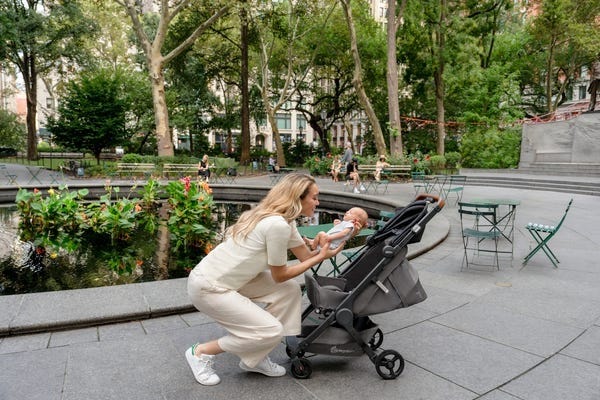

Advantages of Using Strollers for Nature Adventures
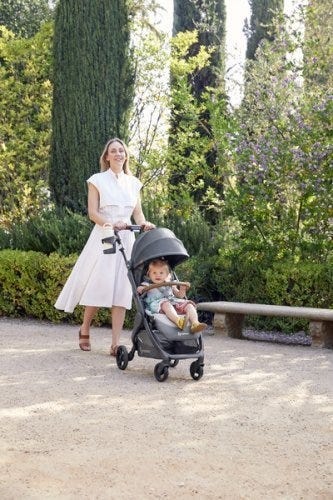

While baby carriers are fantastic for mobility and closeness, depending on the adventure of choice you might want to be a stroller along too.
There are a LOT of baby stroller options on the market. So we understand how confusing it can be to choose the one that’s right for your family. Not only are there a variety of brands, but a variety of strollers that serve different purposes.
There are a few types of strollers on the market:
- Full-sized stroller: This is typically the stroller parents thing of buying for all its versatility.
- Lightweight or umbrella stroller:These compact strollers are perfect for on-the-go adventures.
- Jogging stroller: Designed for parents who want to combine fitness with outdoor adventures.
- Double stroller: Designed for parents with multiple kids, especially twins.
- Car seat carrier: These strollers connect to a specific car seat. We don't typically recommend these as they can be unsafe for baby and uncomfortable for parents who are pushing.
Learn more about the types of strollers and which one would be best for you.
Benefits of Bringing a Stroller
- Storage Space for Gear: Ample room for carrying all your essentials like a diaper bag, beach toys and more.
- Shade and Weather Protection: Built-in canopies to shield your baby from the sun when they are lounging.
- Options: If you have more than one kid, you can stroll with one and carry the other. Or, if you’re getting warm or your little one is getting fussy, you can switch up their position from stroller to carrier or vice versa.
Safety Tips for Strollers
- Ensure your stroller is in good working condition. Make sure buckles are still buckling and that there are no rips or holes that could compromise your baby’s safety.
- Use sunshades or bug nets to protect your little one’s skin.
- Securing the baby properly: always buckle up your baby for safety even if you think they are old enough to go without the buckle.
Combining Baby Carriers and Strollers
For the ultimate flexibility, consider using both a baby carrier and a stroller on your outings.
Combining both options allows you to adapt to different situations. Use the carrier for more rugged trails and switch to the stroller for smoother paths or when your baby needs a nap.
Transition Tips
- Smooth Transitions: Plan stops where you can easily switch from carrier to stroller.
- Pack Light: Only bring essentials to make transitions easier.
Tips for a Successful Adventure
Planning Ahead
- Route Planning: Choose baby-friendly trails and parks. Check local mom groups or outdoor groups and get recommendations for the best outings for kids.
- Check Weather Conditions: Avoid extreme heat or unpredictable weather. Even with our most breathable carriers, when it’s hot, it’s hot. And having two bodies against each other in the heat will be naturally hot and sticky already.
- Packing Checklist: Include diapers, snacks, water, sunscreen, and a first-aid kit. These all-position carriers have storage pockets where you can fit some of the items easily!
- Stay Hydrated and Nourished: Pack healthy snacks to keep energy levels up and bring plenty of water for both you and baby.
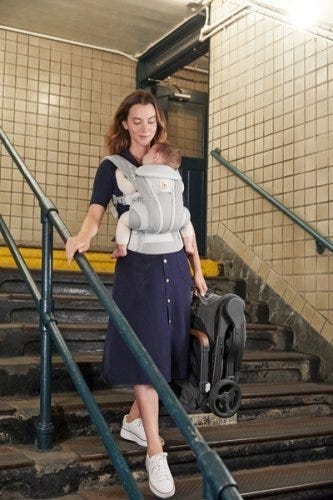

Summer adventures with your baby are a wonderful way to create lasting memories and enjoy the beauty of nature together. From baby carriers to strollers, Ergobaby products are designed to provide comfort and ease for both you and your little one. So, gear up, get outside, and explore the world with your baby by your side.
Ready to embark on your own summer adventures? Check out Ergobaby’s range of baby carriers and strollers to find the perfect match for your family’s needs. Visit our website today and start planning your next outdoor excursion!

